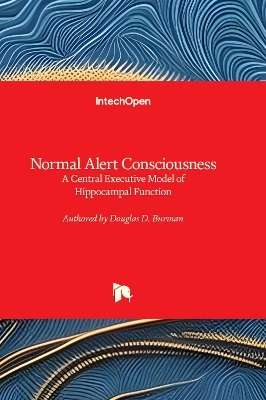
Normal Alert Consciousness
A Central Executive Model of Hippocampal Function
Seiten
2023
IntechOpen (Verlag)
978-0-85014-066-8 (ISBN)
IntechOpen (Verlag)
978-0-85014-066-8 (ISBN)
Proposes a new model of consciousness based on a prescribed definition for one of several conscious states of consciousness known as the ""normal alert state."" This state is inclusive of all characteristics associated with an alert individual unaffected by disease or injury. The model posits a central executive role for the hippocampus.
During the last half century, several scientific theories have been developed to explain experimental findings related to our conscious experiences, particularly those involving perceptual awareness. The adequacy and philosophical implications of these theories have been debated fiercely by both scientists and philosophers, including their adequacy in explaining the subjective nature of consciousness. The adequacy of theoretical models has been controversial in part because there is no consensus on the definition of consciousness itself. This book proposes a new model of consciousness based on a prescribed definition for one of several conscious states of consciousness known as the “normal alert state.” This state is inclusive of all characteristics associated with an alert individual unaffected by disease or injury, including awareness of the sensory environment, memory, learning, attention to location and sensory features, language, emotional responses, intentional movements, decision-making, creativity, and a sense of self. Through its interactions with other brain regions essential for these diverse functions, the model posits a central executive role for the hippocampus; qualia, the subjective feelings associated with sensory stimuli, is suggested to arise from hippocampal interactions between events and the emotional responses they evoke. The book offers methods for testing the model. In several respects, this model of hippocampal function is analogous to the “central theater of the mind” described by Descartes, a concept that philosophers and scientists previously discarded due to false assumptions. The model presented brings together observations about our inner selves and scientific findings, using analogies and life experiences to illustrate how each can inform the other; evidence suggests disruptions in information flow between the hippocampus and other brain regions may explain many neurological disorders. The book also discusses the philosophical implications of the model, including such topics as free will and the possibility of sentience in artificial intelligence.
During the last half century, several scientific theories have been developed to explain experimental findings related to our conscious experiences, particularly those involving perceptual awareness. The adequacy and philosophical implications of these theories have been debated fiercely by both scientists and philosophers, including their adequacy in explaining the subjective nature of consciousness. The adequacy of theoretical models has been controversial in part because there is no consensus on the definition of consciousness itself. This book proposes a new model of consciousness based on a prescribed definition for one of several conscious states of consciousness known as the “normal alert state.” This state is inclusive of all characteristics associated with an alert individual unaffected by disease or injury, including awareness of the sensory environment, memory, learning, attention to location and sensory features, language, emotional responses, intentional movements, decision-making, creativity, and a sense of self. Through its interactions with other brain regions essential for these diverse functions, the model posits a central executive role for the hippocampus; qualia, the subjective feelings associated with sensory stimuli, is suggested to arise from hippocampal interactions between events and the emotional responses they evoke. The book offers methods for testing the model. In several respects, this model of hippocampal function is analogous to the “central theater of the mind” described by Descartes, a concept that philosophers and scientists previously discarded due to false assumptions. The model presented brings together observations about our inner selves and scientific findings, using analogies and life experiences to illustrate how each can inform the other; evidence suggests disruptions in information flow between the hippocampus and other brain regions may explain many neurological disorders. The book also discusses the philosophical implications of the model, including such topics as free will and the possibility of sentience in artificial intelligence.
| Erscheinungsdatum | 08.11.2023 |
|---|---|
| Verlagsort | London |
| Sprache | englisch |
| Maße | 178 x 254 mm |
| Themenwelt | Geisteswissenschaften ► Psychologie ► Biopsychologie / Neurowissenschaften |
| ISBN-10 | 0-85014-066-8 / 0850140668 |
| ISBN-13 | 978-0-85014-066-8 / 9780850140668 |
| Zustand | Neuware |
| Haben Sie eine Frage zum Produkt? |
Mehr entdecken
aus dem Bereich
aus dem Bereich
Grundlagen, Klinik, Rehabilitation
Buch | Softcover (2024)
Urban & Fischer in Elsevier (Verlag)
CHF 78,40
Buch | Spiralbindung (2022)
modernes lernen (Verlag)
CHF 41,90
Grundlagen, Klinik, Therapie und Verlauf der …
Buch | Softcover (2024)
Kohlhammer (Verlag)
CHF 117,60


